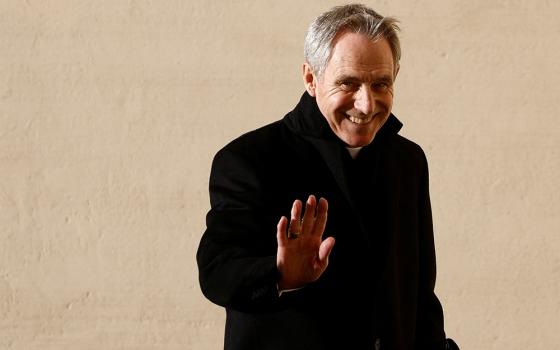This year we observe the 400th anniversary of the death of Matteo Ricci, the famous Jesuit missionary to China who died on May 11, 1610.
Ricci, an eminent scientist in his own right, adapted Christianity to Chinese culture, promoted the use of Chinese rites, and assumed the status and dress of a mandarin. For that he was a great, but also a tragic figure in the history of the Church.
Pope Paul V (1605-21) was in office when Ricci died. Although infamously remembered for his censure of the astronomer Galileo for teaching that the earth revolves around the sun, Paul V approved in 1615 the use of the vernacular in the liturgy in China, thereby validating the bold missionary initiatives of Father Ricci.
Paul V’s successor, Gregory XV (1621-23), was determined to coordinate the Church’s widespread missionary efforts by establishing the Congregation for the Propagation (also called Propaganda) of the Faith in 1622.
The new congregation became a virtual headquarters of the Counter-Reformation because the missionary efforts were now directed not only to non-Christian lands but also to countries under Protestant control.
The first pope educated by the Jesuits, Gregory XV canonized the founder of the Society of Jesus, Ignatius of Loyola, and another Jesuit, Francis Xavier, who is generally regarded as the greatest missionary of all time.
Pope Urban VIII (1623-44) founded the Urban College of Propaganda in 1627 to train missiona-ries, enlarged the work of the Congregation for the Propagation of the Faith, and sent missiona-ries, including non-Jesuits for the first time, to the Far East. The last was a fateful decision, as we will see below.
Pope Innocent X (1644-55) continued his predecessors’ support of the missions, but with a major difference. He also approved a decree of the Congregation for the Propagation of the Faith that Chinese rituals were not to be used in the liturgy in China, thus invalidating the innovative missionary gains that previous popes had supported.
However, his successor, Pope Alexander VII (1655-67), reversed field again and decreed on March 23, 1656 (46 years after Father Ricci’s death) that the Jesuit missionaries in China be allowed to use Chinese rites and, three years later, dispensed the native Chinese clergy from having to pray the Divine Office in Latin.
Alexander VII’s positive approach to the Jesuit missionaries in China was matched by his commissioning of the famous Bernini semicircular colonnades that, to this day, partially enclose St. Peter’s Square in Rome.
The next five popes did nothing to negate Alexander VII’s support for Mateo Ricci’s far-sighted missionary work: Clement IX (1667-69), Clement X (1670-76), Blessed Innocent XI (1676-89), Alexander VIII (1689-91), and Innocent XII (1691-1700).
But then the missionary situation in China went south, as it were.
Pope Clement XI (1700-21) was committed to the missionary work of the Church in northern Germany (where Protestants were now in control) and in India and the Philippines, and he established new missionary colleges in Rome.
In China, however, he found himself in the middle of a pastorally toxic dispute between Jesuit and Dominican missionaries. The Jesuits were using papally approved Chinese rites, and also embraced the cult of Confucius and of ancestors on the grounds that these cults were civic, not religious, in nature. The Dominicans strongly opposed such practices.
On November 20, 1704, Clement XI accepted the judgment of the Holy Office (formerly the Inquisition and now the Congregation for the Doctrine of the Faith) that missionaries in China should be prohibited from using Chinese rites. He reaffirmed that judgment in 1715.
Clement XI’s action proved disastrous to the Church’s missionary outreach in China. Chinese Catholics were persecuted and many missions were closed. It was not until 1939 that Pope Pius XII (1939-58) reversed Clement XI’s decrees, but by then the lasting damage had been done.
Pope Innocent XIII (1721-24), although educated by Jesuits, had developed an acute dislike of the Society of Jesus while serving as nuncio in Portugal. He even thought of suppressing the Order because of their lack of compliance with his predecessor’s prohibition against the use of Chinese rites.
He forbade the Jesuits from accepting novices unless, within three years’ time, he had satisfac-tory proof that they were complying with the papal ban. Later, in 1735, Pope Clement XII (1730-40) renewed Clement XI’s prohibition and launched an investigation into Jesuit missionary practices.
The final papal prohibition of Chinese rites occurred under Pope Benedict XIV (1740-58) in 1742, when he also extended the ban to the Malabar rites in India.
Pope Pius XII and history itself have validated the work of Matteo Ricci, but their judgments were a long time in coming.
© 2010 Richard P. McBrien. All rights reserved. Fr. McBrien is the Crowley-O’Brien Professor of Theology at the University of Notre Dame.




